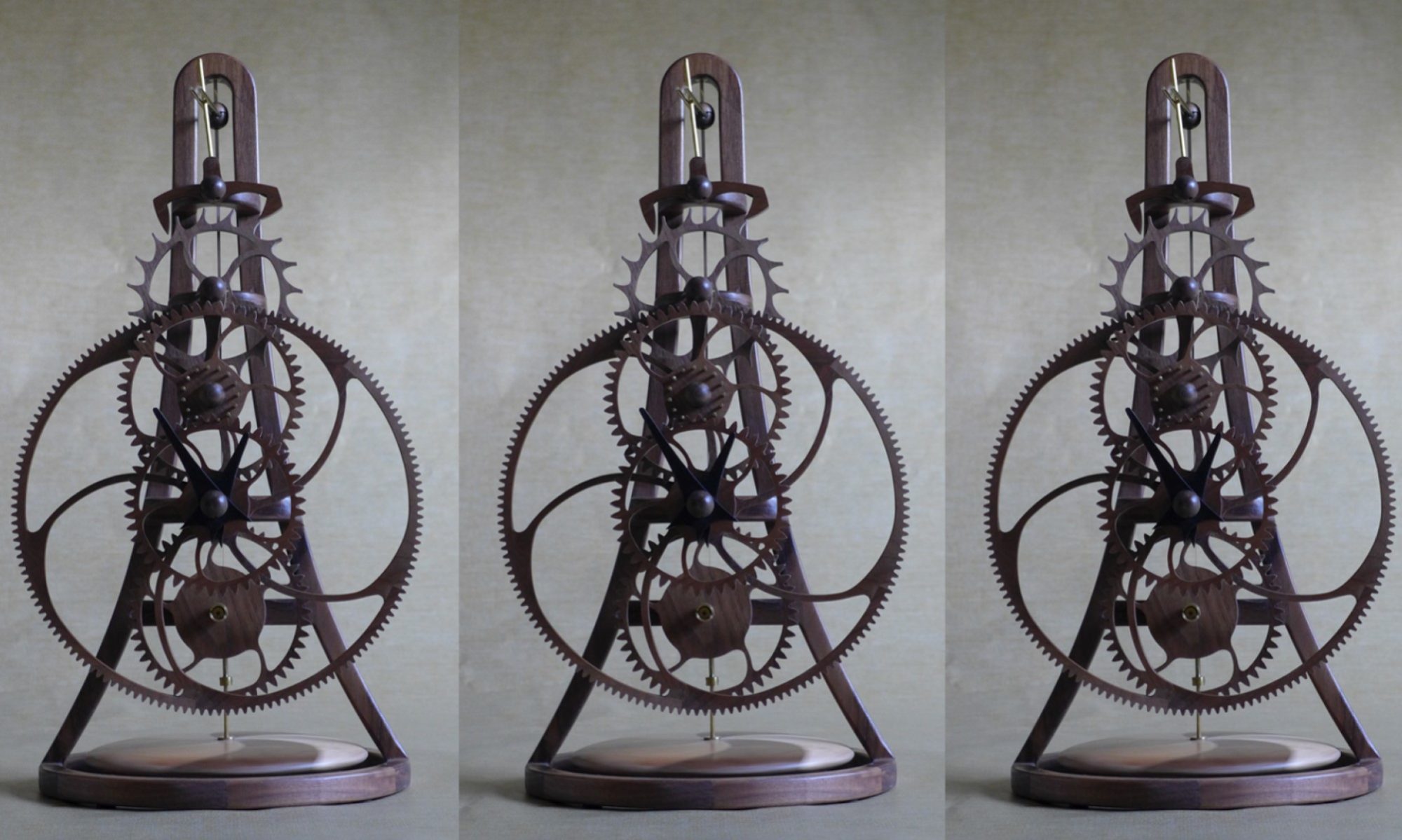A light day of clock making today as it was my turn to shop for the week’s food. I never thought that I would be selecting vegetable at the supermarket looking like a bank robber in my homemade mask.
After returning and putting everything away I was not in the mood for sanding the 312 wooden gear teeth that make up the clock. I went down the “to-do” list and decided to tackle the most complicated metal component in the clock – the “torsion pendulum spring fork” that transmit the motion of the torsional pendulum spring to the escapement pallet.
Below is a photo of the “torsion pendulum spring fork” on my previous Electra clock.

Note that you can only see the brass forks as the remainder, the body, is hidden under the spherical wooden cover.
The “torsion pendulum spring fork” clamps to the torsional spring using a set screw so that its position on the spring can be adjusted.
On a previous clock I make a small steel jig to hold the body of the part and allow accurate drilling of the three holes, one for the clamping set screw, and two for the forks that are made from 1/8” diameter brass tube.







My current thinking is to turn my attention to the electronics of the Remontoire motor controller tomorrow, but that could change. There are still 312 wooden teeth to sand and 20 more pinion rods to cut.

